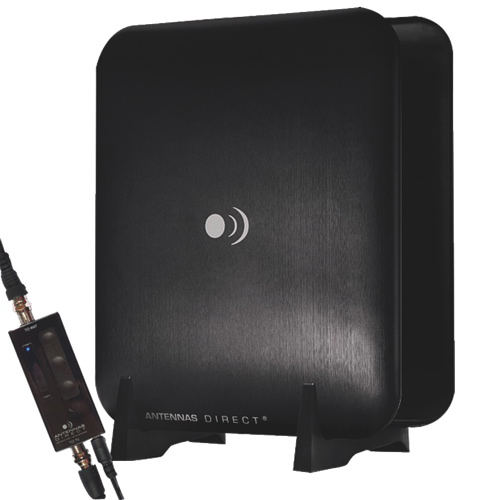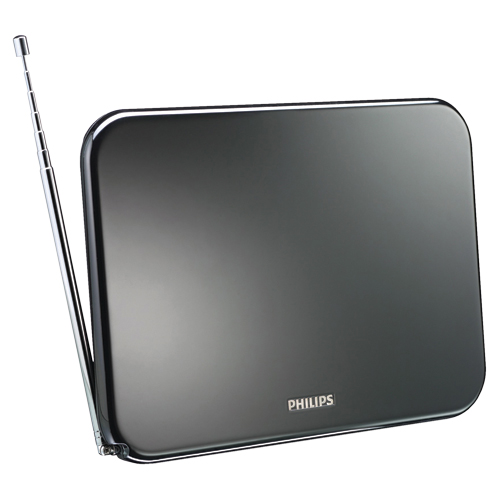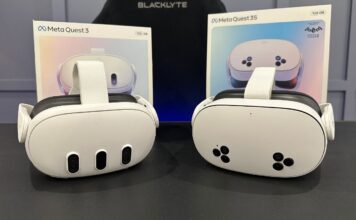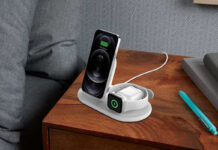 Antennas have been used for over 100 years to receive radio signals; one of the most famous transmissions ever made was conducted between Signal Hill in St. John’s Newfoundland and Poldhu, Cornwall in England–in 1901! Transmitting data over radio, whether it’s audio, visual, or digital signal has been a commonplace thing since then.
Antennas have been used for over 100 years to receive radio signals; one of the most famous transmissions ever made was conducted between Signal Hill in St. John’s Newfoundland and Poldhu, Cornwall in England–in 1901! Transmitting data over radio, whether it’s audio, visual, or digital signal has been a commonplace thing since then.
From 1927 through to the mid-1950s the only way that television signals were transmitted was through over-the-air or OTA signals. For nearly 70 years a variety of standards were established for these radio broadcasts around the world, with relatively acceptable quality being the norm, with new technology advancements rolling out as they became available. From black and white to colour, from mono to stereo, OTA was a free way for TV watchers to enjoy local signals.
In the mid-1990s interest in Digital TV began to grow, laying the groundwork for shutting down the analogue OTA network and replacing it with a higher quality version broadcasting digital audio and digital video. Across Canada we have seen the abolition of the analogue OTA network almost everywhere, except for in certain northern communities. The CRTC set a date of August 31, 2011, mandating ATSC (advanced television systems committee) as the standard for digital terrestrial TV. All new televisions should include digital tuners.
Those tuners are handy, but in order to receive a digital signal you’re going to need
a digital antenna
ClearStream Indoor/Outdoor Digital TV Antenna
I’ve actually had some experience with this antenna, having installed one in my parent’s home in rural Ontario. The flexibility of an indoor/outdoor antenna speaks for itself: you can stick this on a mast–that’s a really long pole outside your house–or you can install it indoors if you have a view of where the signal is coming from. Attics can be a great place to install an antenna like this, assuming that you have a line of sight to your source. You can expect a range of about 105km (or more) with this antenna properly installed.
Installing it on the roof – TV from the USA!
We installed this antenna on my dad’s roof, next to his satellite dish; as I mentioned earlier, you don’t need to be a cord cutter to enjoy an antenna; in my dad’s case he gets use out of it when satellite goes down, and he gets access to certain channels that are broadcast from Buffalo that aren’t part of his satellite package.
Running cable
You’ll need to run co-axial cable from your antenna to your display device; if you opt for table-top or wall mounting of your antenna that may be a short run, but if it’s up on the roof you’ll need to be prepared to run that cable. If you’ve have an antenna or a satellite dish in the past you may be able to use the coaxial cable that’s already there. In some cases, if you have a coaxial cable network in your house, you can connect your antennas to that.
 ClearStream Amplified Indoor Digital TV Antenna
ClearStream Amplified Indoor Digital TV Antenna
Geared more towards indoor use, an antenna like this is great if you’re not looking to get outside on the roof or if you live in a space where you simply don’t have access or permission for an outdoor device. It has an in-line preamplifier kit that boosts the signal with a 20dB gain, helping to make the reception of weaker signals possible. The nice thing about this particular antenna is that it comes with a length of coaxial cable to hook it up.
Phillips Amplified Indoor HDTV Antenna
Like the ClearStream Indoor Antenna, the Philips is built to receive Digital TV signals. It has its own 25dB amplifier as well as a noise reduction filter to help protect against signal loss.
How to get your antenna working
Your antenna, as mentioned above, is going to connect to your television with coaxial cable; that’s the good old cable that has been carrying cable TV and satellite TV signals to your display for almost 30 years. That coaxial cable can run both indoors and outdoors–with the right cable, of course. Only use outdoor rated cables in outdoor applications, and in-wall cables if you’re going to be hiding the wires in-wall in your home.
When you’ve connected your coaxial cable to both your antenna and your display you’re halfway there. How do you get the channels available to you?
 Scanning for channels
Scanning for channels
Generally when you’ve connected your antenna it will be under an input labelled either ANT or CABLE (unintuitive, I know). Most new TVs are actually fairly smart: they’ll recognize that there’s a new antenna attached and they’ll begin to scan for those channels right away. If not you can prompt your TV to scan for digital antenna signals by finding that option in your menus.
Your TV will begin to scan through the available digital channels in your area by scanning through a range of frequencies. As it finds strong signals it will assign those signals to channels. With most modern displays you can assign channel names, helping you to organize your viewing.
One thing to keep in mind is that the signal that you’re receiving is directional. Experiment with where you put your antenna in order to find out what’s available to you.
As always, exercise safety when installing your new antenna. If you’re unsure of the process or if you need assistance, speak to the Geek Squad at your local Best Buy; a professional installation can go a long way to making your experience with your new antenna a good one.






































This article is false.
You do NOT need a digital antenna to receive digital signals. The same antenna you’ve been using for years to receive analog UHF and VHF signals is perfectly fine for receiving digital signals.
The most important thing for excellent digital reception is to get your antenna outdoors and up high.
The article isn’t say you can ONLY use digital antennas, most likely any antenna you buy today will be labelled as a digital antenna and newer ones will most likely give you a better signal then those old rabbit ears
The article clearly states “in order to receive a digital signal you’re going to need a digital antenna.” Not sure that could be any clearer.
Which if you go to the store today you will probably have a hard time finding anything not labeled Digital, so I dont really see any issue with the wording of the article
Tech40, thanks for the feedback. You’re definitely right here – you don’t need to upgrade your old antenna. This was directed at people purchasing new antennas. I’m going to remove the word “digital” from the phrase “digital antenna”
I’m not really sure why you’d just to “this article is false” though, without actually giving some thought to the motivation. This is for someone who was thinking about it, and might decide to add an antenna to their home or cottage.
Graham, actually my comment was predicated on the motivation which I assumed it was to sell antennas, hence the links to Antennas for sale on the Best Buy site. Forgive me if the motivation of this blog is not to help sell product!
Because I assumed the motivation was to sell antennas, I wished to clarify a myth which, sadly, has been promulgated by many antenna dealers over the last decade and a half. A myth that I have written several times about over the last 15 years.
For the record, what changed with the digital transition was not the type of antenna required, rather it was the type of tuner required and the term used to describe how signals were received.
With analog signals, you used an NTSC tuner to receive programs “off-air”, with digital signals, you use an ATSC tuner to receive over-the-air (OTA) signals.
I hope that clarifies things.
I don’t set out to sell anything, I’m an independent writer tasked with writing stuff about things to inform people. We link stuff to help people find things if they want to buy them, but the above isn’t a sales pitch, it’s info to help people figure out if they want or need something.
I didn’t know that there was a cabal of antenna dealers who have been promulgating a myth (as a writer: nicely done there) about the nature of NTSC and ATSC; I hadn’t ever considered that the antenna market was that large. When I received the request to write an article about antennas I was actually surprised; antennas don’t have the support of major telecommunications companies and I sincerely doubt that there’s going to be a run on them because of this article. I saw this as a bit of a public service opportunity to talk about a technology that a small segment would be interested in.
Anyway, I’m not sure we’re going to get much farther on this; yes Best Buy sells antennas, but no, they didn’t ask for an ad. They asked for an article that focused on how these antennas work and what to look for. Thank you for adding your insight about ATSC – I think that was actually covered in paragraphy three, but it’s nice to see it spelled out more directly.
Have a nice day – and if you’d like to discuss this directly, please send me a DM on twitter @thetechnogram
Graham, I don’t have a tinfoil hat and I never suggested there was a “cabal” of antenna dealers, however, I am well aware of unscrupulous dealers who will say virtually anything to sell products.
Ten years ago, I created a Canadian OTA forum where people could discuss. In the seven years that I managed it, it attracted millions of visitors and thousands of questions. Perhaps the #1 question from potential OTA users was whether you need a digital antenna.
Many times I heard stories of people who had junked perfectly good antennas because their dealer told them they needed a “digital antenna.”
Signing off.
twitter @digitalhomeca
Comments are closed.